Top Stories
When the childhood home of Melissa Barthelemy, a sixth-year graduate student of Public History, burned down in Ojai when she was eight years old, she and her family may have initially thought they only escaped with a few photo albums. But, what they eventually learned was they had gained life lessons in community, compassion, and the generosity of others.
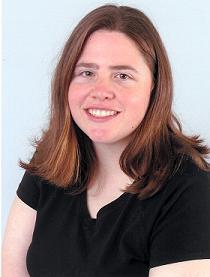 When the childhood home of Melissa Barthelemy, a sixth-year graduate student of Public History, burned down in Ojai when she was eight years old, she and her family may have initially thought they only escaped with a few photo albums. But, what they eventually learned was they had gained life lessons in community, compassion, and the generosity of others.
When the childhood home of Melissa Barthelemy, a sixth-year graduate student of Public History, burned down in Ojai when she was eight years old, she and her family may have initially thought they only escaped with a few photo albums. But, what they eventually learned was they had gained life lessons in community, compassion, and the generosity of others.
They found an outpouring of community support as neighbors and others offered mattresses, clothing and all sorts of items to help them in their time of need.
Little did Melissa know that, years later, she would use those lessons to pay it forward by first helping UCSB students cope with their trauma in the wake of the Isla Vista Tragedy of May 23, and then by creating a collection of items to remember the victims and document the campus and community response.
I sat down with Melissa Barthelemy to discuss her work with the IV/UCSB Memorial 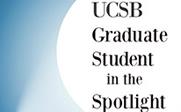 Preservation Project and the upcoming exhibition for which she is serving as project manager and curator, which is titled "We Remember Them: Acts of Love and Compassion in Isla Vista." The exhibit will be open to the public for viewings from May 20-June 20 in the Red Barn (Old Gym) near the bus circle on campus. (You can find more information about Melissa and the Remembrance Projects she is engaged in at www.melissabarthelemy.com)
Preservation Project and the upcoming exhibition for which she is serving as project manager and curator, which is titled "We Remember Them: Acts of Love and Compassion in Isla Vista." The exhibit will be open to the public for viewings from May 20-June 20 in the Red Barn (Old Gym) near the bus circle on campus. (You can find more information about Melissa and the Remembrance Projects she is engaged in at www.melissabarthelemy.com)
She was forthcoming about her involvement in the project, her own struggles as a graduate student, and the unique circumstances of her childhood, growing up in the back room of her parents' toy store.
So let's start with your current work. How did you become involved in the IV/UCSB Memorial Preservation Project?
In the immediate wake of the tragedy my initial concern was how to best support the graduate and undergraduate students at UCSB. I contacted Turi Honegger, Assistant Clinical Director of CAPS (Counseling And Psychological Services), at UCSB. I strongly felt we needed a special crisis training session for the graduate students since it is common for undergraduates to approach their Teaching Assistants before turning to faculty and staff for support and assistance. Turi agreed to help me organize this, and we had many email conversations that lasted until 2 a.m. in the days following the tragedy. A small group of us managed to organize two workshop sessions that were held on Tuesday, May 27 and were attended by over 140 people.
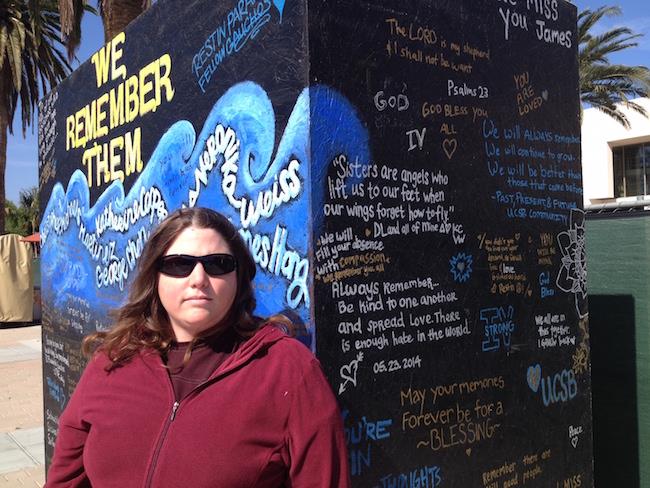
That weekend I also worked closely with community members in Isla Vista to figure out what systems of support were needed there. Some UCSB students told me that they wanted a space in the Arbor that could focus on art and healing and that they thought it was important to have a memorial space on the actual campus. With the support of the Office of Student Life and Associate Dean Katya Armistead we created the Memorial Wall at The Arbor which is a painted wooden structure that is covered in dozens of messages of compassion and solidarity. While working on the space, students asked me, "What's going to happen to the memorial sites in IV? Will all of the items at the sites be thrown away?"
So I asked the Interim Director of Special Collections, at the UCSB Library, if they had any plans to form a collection. He said that librarians generally receive items that are donated but don't go out in the community to collect them, and that I was the first person to approach him about this. He then asked me to convene a committee of librarians, faculty, and students to support the project.
I was hesitant at first because I was so busy. But I visited the spontaneous memorial 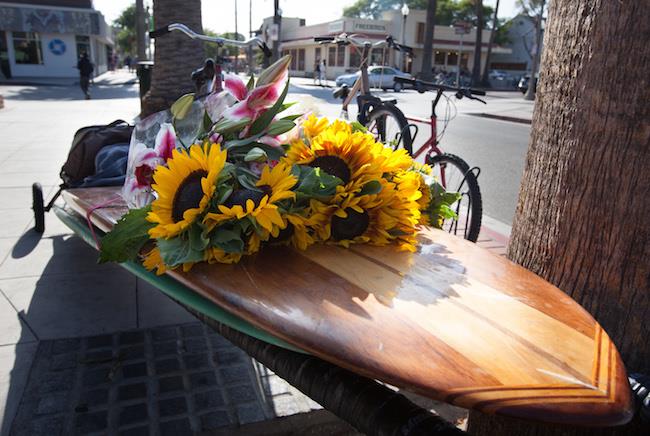 sites in Isla Vista to look more closely at what was there. One day, I went to the site in front of Capri Apartments and I saw cards blowing down the street in the wind. I came across a card written by one of the victims' parents and I decided these items really needed to be saved for the benefit of the families, friends, and the wider community. At that moment I decided to take the project on and have never looked back.
sites in Isla Vista to look more closely at what was there. One day, I went to the site in front of Capri Apartments and I saw cards blowing down the street in the wind. I came across a card written by one of the victims' parents and I decided these items really needed to be saved for the benefit of the families, friends, and the wider community. At that moment I decided to take the project on and have never looked back.
Tell me more about the upcoming exhibition "We Remember Them: Acts of Love and Compassion in Isla Vista."
The central premise of the exhibit is that each of the individual items left at the spontaneous memorial sites in Isla Vista are representative of the acts of love and compassion that poured out from our community and around the world.
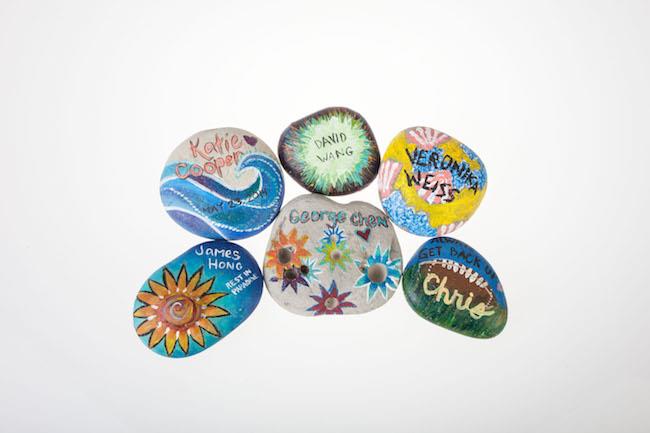 We will be exhibiting some of these items, which include things such as cards, letters, drawings, paintings, origami cranes, and painted rocks. We will also display photographs of the spontaneous and planned memorial events, as well as highlight some of the larger discourses that circulated in the wake of the tragedy and contributed to legislative reforms.
We will be exhibiting some of these items, which include things such as cards, letters, drawings, paintings, origami cranes, and painted rocks. We will also display photographs of the spontaneous and planned memorial events, as well as highlight some of the larger discourses that circulated in the wake of the tragedy and contributed to legislative reforms.
We are striving to create a space for healing and reflection. In the words of one of my colleagues "the exhibit remembers those who died and those who were injured, and it tells the story of a community empowered by its own humanity in reacting to a collective loss."
What has the response been to your work so far?
When people hear about the premise of the exhibit they are supportive. But until 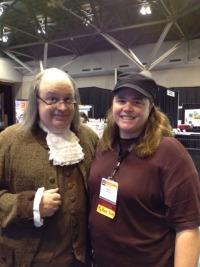 recently we were reluctant to spread the word too much about the exhibit since the campus administration is still coordinating the series of events that will happen around the Remembrance Anniversary.
recently we were reluctant to spread the word too much about the exhibit since the campus administration is still coordinating the series of events that will happen around the Remembrance Anniversary.
Have you ever done something like this before? No! I did serve as a volunteer for a museum when I was in law school. But really I'm learning on the fly.
How has this affected your research?
I changed my whole dissertation topic as a result of this project. My focus is now on Public History, which is a branch of History that is largely focused on educating the public about historical issues.
Some public historians primarily teach at universities, others can be found working in a range of locations including archives and library special collections, community history and historic preservation, museum exhibition and historical commemoration.
My dissertation project is still evolving but at least one chapter of it will examine the upcoming exhibit, so we will be having videographers and photographers document what we create in the exhibit site. That way I can integrate Digital Humanities directly into my dissertation by using these digital technologies to discuss my curatorial decisions and aspects of the exhibit. This documentation will also eventually become part of our digital collection at the UCSB Library website.
Let's turn to your life now. Aside from this event, what one event has had the biggest impact or influence on you and helped shape who you are today?
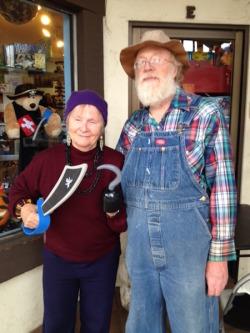 My parents have shaped me the most. From the way I approach life, to my core values and beliefs. My parents have owned a little toy store for 35 years in Ojai and I literally grew up in the back office of their business, which was more of a play room for me. I was surrounded by Slinkies and Silly Putty.
My parents have shaped me the most. From the way I approach life, to my core values and beliefs. My parents have owned a little toy store for 35 years in Ojai and I literally grew up in the back office of their business, which was more of a play room for me. I was surrounded by Slinkies and Silly Putty.
My favorite quote from them is "The only constant in life is change." They have this quote on a sticker, which they placed on their cash register at their toy store, where they give customers change all day long. They have a real quirky sense of humor.
They always emphasized that you can't fully anticipate what's around the next bend. My parents' house burned down when I was eight years old. All we saved were some photo albums. That was very helpful (and horrible) for my ability to respond when tragedy happens. It made us close and brought us together as a family.
It also taught me about the importance of community since people brought us 10 mattresses for beds, dozens of frying pans and lots of other things we couldn't use while were temporarily staying in a hotel. The community response wasn't practical or well-thought out, but it was heartfelt! Moments like this have helped me to always try to see the good in people.
You had a unique childhood, tell me more about it?
I grew up in the mountains of Ojai. My parents owned a house in the Los Padres National Forest that was over 100 years old and our water came from a natural spring on the property. So I had an adventurous outdoor lifestyle from an early age. I had acres and acres to explore, falling in rivers and things like that.
What is the one thing people would be most surprised to know about you?
Usually they are surprised I have done so much independent travel around the world. I have backpacked through Europe several times, and my first trip there was when I was just 17 years old. After I earned my law degree, I spent a month driving from Ojai to British Columbia, all through the Pacific Northwest camping and hiking in the backcountry. I've also gone sky diving and underground cave rafting in New Zealand.
You're very busy. What do you do to relax?
I do as much hiking and gardening as I can. My wife and I love camping. We have gone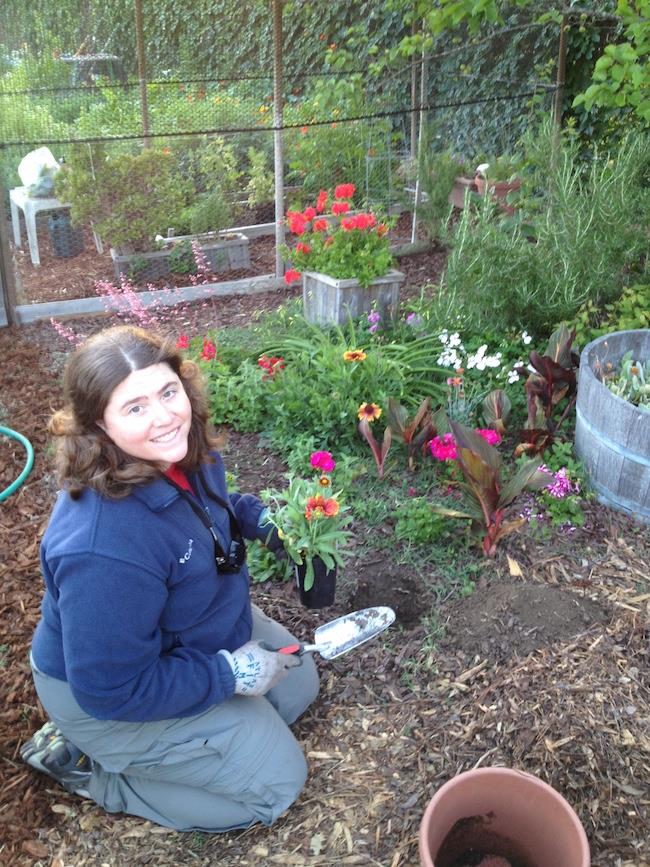 backpacking in the Channel Islands and one of our favorite spots is Kings Canyon National Park up in the Sierra Mountain Range. Basically she tries to take me places where my cell phone does not work.
backpacking in the Channel Islands and one of our favorite spots is Kings Canyon National Park up in the Sierra Mountain Range. Basically she tries to take me places where my cell phone does not work.
What is your biggest accomplishment in life and why? Marrying my wife. My day to day happiness is the most important thing to me. We've been married six years, and thankfully we got married one week before Proposition 8 had passed in California, or we wouldn't have been able to be married all of this time.
Any advice for new graduate students?
Don't ever feel like you are alone in the challenges you are confronted with. I have had serious physical health disabilities while at UCSB and have benefited tremendously from the Disabled Students Program (DSP). No matter what difficulties you encounter, remember you are part of a larger community that is invested in your success and people are here to help support you.
What is the one thing you hope to be doing 5 or 10 years out of graduate school?
I love teaching, but I also could see myself doing museum management or higher education administration. I am open to working in a range of educational environments. I will be happy as long as I know I am continuing to have a positive impact in the world.